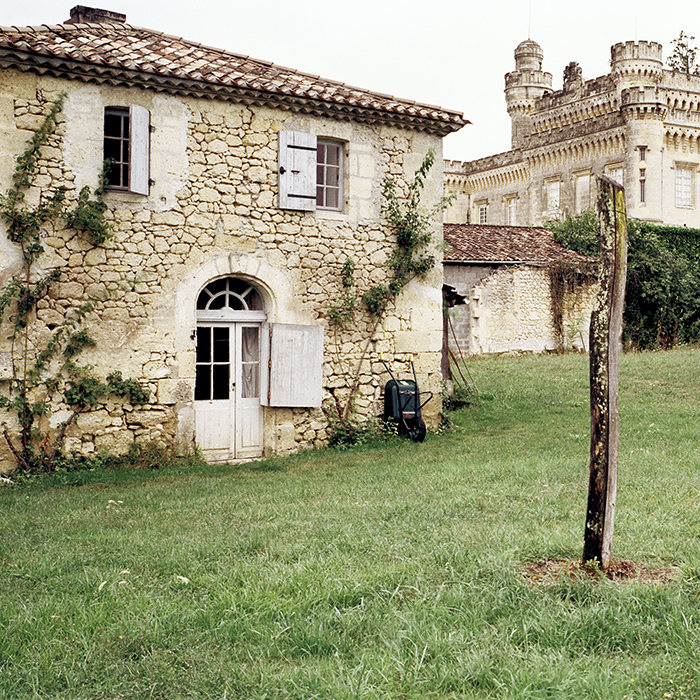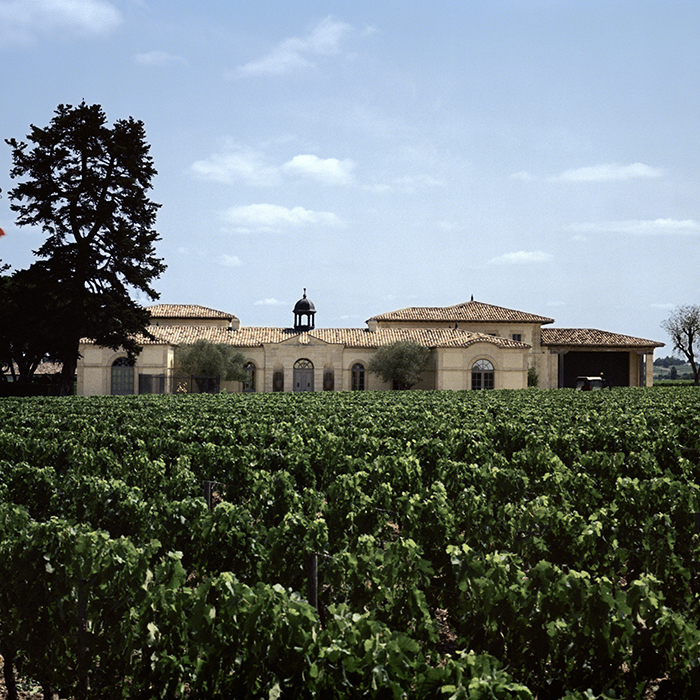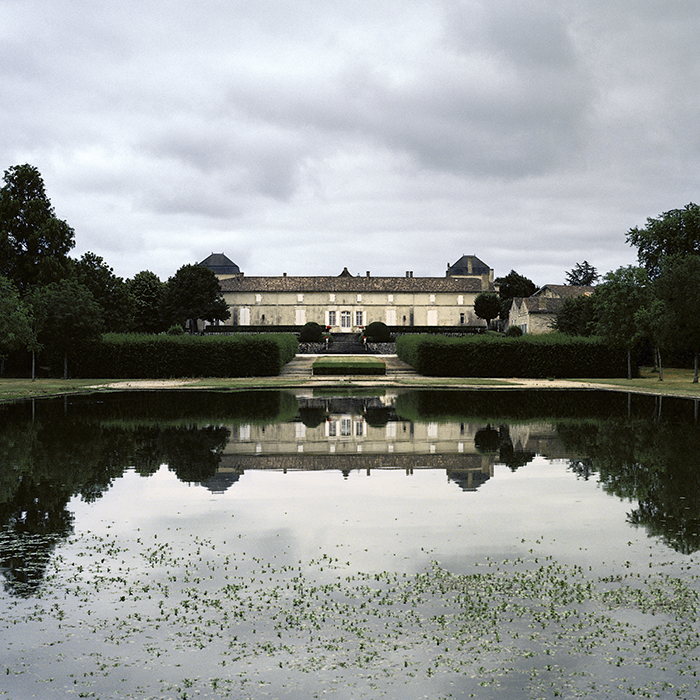Bordeaux 2016: out of the bottle
Author: Philip Moulin

Over 40 years ago, a group of buyers from leading UK wine merchants gathered in Southwold, on the Suffolk coast, to taste the most recently bottled vintage of Bordeaux. The Southwold Tasting was to become an annual fixture, hosted for many years by Adnams (of brewing fame). As the wines are tasted blind and include the full spectrum of quality, from Cru Bourgeois to First Growths, it has become known as probably the most in-depth, professional assessment of a Bordeaux vintage in the world. For logistical reasons, the Southwold Tasting is now hosted (quite brilliantly) by Farr Vintners, in their wonderful tasting room, overlooking the Thames in Battersea. The tasting takes place over three days, includes over 250 wines, and – as well as the wine trade members – is attended by wine writers Steven Spurrier, Jancis Robinson and Neal Martin.
This year was our chance to taste the much lauded 2016s – and it’s fair to say they didn’t disappoint. For me the hallmark of a great Bordeaux vintage is that one can buy confidently, across all price points, without fear of coming a cropper. In this respect, 2016 is an unqualified success. These are wines which, from modest Médoc luncheon Clarets, to the rarefied luxury names in Pomerol and St Emilion, all show a delightful, easy-going style, which – for once – is not forced, or “made” in the winery. They feel very much like the product of the vintage conditions, rather than any winemaking style, as if the château owners were comfortable enough with nature to let the wines do their own thing. They are fresh, light-on-their-feet and supple. Tannins and alcohol are held neatly in check, and while there is ripeness and concentration, there are few signs of heaviness. They are approachable (amazingly so in some cases), but they will last very well – and, above all, they will be simply delicious to drink.
We began by tasting the dry whites – wines that I have long felt are hugely overlooked and, in many cases, undervalued. Wines from venerable old properties such as La Louvière and Latour-Martillac showed very well at the affordable end of the market, while Château Bouscaut Blanc continues to impress. This consistently shows well and, although not easy to find in the UK, is worth seeking out. Going up the scale, but still remarkable value, was Château de Fieuzal Blanc, where huge investment in the last decade is clearly paying dividends – this came second overall amongst the Pessacs. I enjoyed the raciness and drive of Domaine de Chevalier Blanc this year, and Smith-Haut-Lafitte Blanc was its usual benchmark self. The surprise winner for the group was the new white wine from Cheval Blanc, Le Petit Cheval Blanc, a striking example of barrel-fermented Sauvignon. Overall, these are wines for fairly early drinking – perfect now, and over the next couple of years, but there was not a bad wine to be seen amongst them.
Moving onto Sauternes and Barsac, notable wines from the region included a lovely example of Suduiraut and of course Château d’Yquem – a colossal wine, which needs years to really unfurl. La Tour Blanche came top of the group’s list, with a fabulous wine of great length and persistence. My own favourite was a beguiling Château Climens: one of my top scorers of the whole tasting, it was graceful, pure and showed huge potential.

Starting on the reds, we moved over to the Right Bank, and began with several flights of wines that, in lesser vintages, can prove a bit of a challenge. In amongst the satellite regions of St Emilion and Pomerol, there lie a lot of small châteaux who have struggled for years to make their presence felt on the export markets. While Robert Parker held sway as the arbiter of vinous taste in the 1990s and early 2000s, many of them felt that the way to be noticed (by Parker and his readers) was to make wines that appealed to his palate – big, fruit-driven, monolithic wines, in which sheer concentration was deemed the qualitative goal, and simple “drinkability” was often forgotten. Happily, we saw far less evidence of this in 2016. Nowhere is this more noticeable than in Château Fombrauge – a small, Grand Cru Classé on the outskirts of St Emilion. Years ago, this was practically a core line at Berry Bros. & Rudd, but in the late 1990s it lost its way somewhat, in the pursuit of hallowed Parker points, and we stopped buying it. It had become dark, thick and jammy, with fierce tannins which were the result of over-extraction in the winery. In 2016, my note read “far better balance here, lovely supple fruit, and real freshness on the long finish”. As well as Fombrauge, highlights from these flights included the traditionally styled Château Fonplegade in St Emilion and the more modern, but equally lovely, Les Cruzelles in Lalande de Pomerol.
Among the more expensive names in St Emilion, Clos Fourtet showed well, in its polished, squeaky-clean way, once again battling it out at the top with the contrasting Tertre Roteboeuf. The latter is an intriguing wine: the owner makes few concessions to the modern, international style, instead the wine is always high-toned, medium-bodied and fantastically drinkable. It divides opinion every year and is so unique that it’s easily picked out in a blind tasting. If you’ve never tried it, this is a wine that should be on your bucket list. Totally different in style to Tertre Rotebeouf was Bélair Monange – a Moueix owned property that is undergoing a major resurgence of late. Polished and concentrated, with great focus and energy, I defy anyone to find fault here.
At the very top of the tree in St Emilion was Château Ausone, followed by what will no doubt turn out to be a legendary vintage of Figeac. All this, and I’ve only just got around to Canon – one of my favourite wines of the tasting – which has such finesse and purity. This sensational array of wines was a privilege to taste. It is hard to choose between them, but gosh… what thrilling stuff!
And so, to the Pomerols. The fact that four of these wines made their way into the top six of the entire tasting says it all. Reading my notes again, I can see that words were starting to fail me. I had Vieux Château Certan in first place… while the group vote went to Lafleur – but how to split them? Both wines of singular brilliance, the former with its dazzling vigour and freshness, the latter for its brooding depth, definition and power. And where does that leave Pétrus in this remarkable vintage? My note reads “… this is regal, it strolls on and on, with effortless charm and grace”.

Across the river, and into Pessac-Léognan, there is hardly any let-up, with another consistently excellent line-up of wines. If we accept that Haut-Brion and La Mission both comfortably adopt the top two spots (and their second wines were also superb), we find ourselves with a very close runner-up in Carmes Haut-Brion. Their second strong showing in a row, this is another property with a lot of investment behind it, and the result was plain to see. Pape Clément and Smith Haut Lafitte displayed their typical polish and style, and there was another pleasing performance from Domaine de Chevalier – slightly richer this year in my book, and possibly all the better for it.
Having been one of the standout regions in 2015, the commune of Margaux was a little more hit-and -miss in 2016. I found both Châteaux Margaux and Palmer to be atypically powerful and extrovert this year, but in time their exuberance might resolve into something truly special. Brane-Cantenac was the group’s favourite this year, showing the customary focus and purity of its great Cabernet vineyards. Rauzan-Ségla once again showed beautiful poise and balance – this is such a moreish wine, and the epitome of Margaux charm for me. A final nod to our old favourite, Château Giscours, which I thought was lovely this year, in its typically clipped, neat and stylish way.
St Julien, so often the most evenly matched commune, lived up to that reputation. I don’t think I’ve ever tasted such a perfect flight of wines, when taking into account their price-quality ratio. It was so hard to choose between them, and my notes became rather repetitive. Langoa Barton was easily the best-value wine here: in a line-up of fabulous wines, it more than held its own, at a fraction of the price. In the end, Léoville Poyferré stole the top spot, with Ducru a close second and Léoville Las Cases third, although I feel that Las Cases is probably 30 years away from showing its true potential. For now, the silky charm of Poyferré gets the nod, but what a fascinating taste-off it will make 10 years from now.

For me, the Pauillac flights are the ones I most look forward to. They may not be the best barometer of overall vintage quality (that is usually St Julien), but this is where my heart lies, and where the most classically “Bordeaux” wines are to be found. Mouton led the charge, and not for the first time recently. For me this was a serious (not fancy) Mouton, with huge potential and much in common with the 1986 – a wine for the long haul. Latour was decades too young of course, but with phenomenal depth and concentration. It was not unlike Léoville Las Cases, in a sense – it has so much left to unveil, but needs time to let down its guard. Running them both a close race was probably the finest Grand-Puy-Lacoste ever made. It would be hard to find a better example of Cabernet-driven Pauillac – restrained, powerful and majestic. Setting aside the First Growths, the group put GPL in first place. Pichon Baron and Pichon Lalande came next, and which you would prefer is very much down to personal preference. I found Baron to be a little more elegant than usual, and Comtesse to be more voluptuous, but both were superb examples of Pauillac. Lynch-Bages also deserves a mention – of them all, Lynch was probably the closest in style to Latour – a muscular, monument of a wine, which will be amongst the most long-lived of the vintage.
Finally, the most northerly commune in the Médoc, and historically the most backward – St Estèphe. For the second year in a row, one wine stands out as the best-value wine of the vintage – Château Meyney. For years a rather unheralded address producing solid, unyielding wines of the old school. Selling for a fraction of the price of the Grands Crus Classés, Meyney is clearly doing great things right now – a true vin de garde, but with modern winemaking to add polish and life. This is serious wine, and one that rivals the best of the vintage. Calon Ségur was level pegging with Meyney (and is still fair value), with a lighter Montrose and a beautifully focused Cos just behind. Lafon-Rochet just missed out on a podium spot, and Basil Tesseron is making terrific wine at the moment.
In summary, 2016 is definitely one of the finest vintages of modern times. I would put it ahead of every vintage since 2000, with the possible exception of 2010. My feeling is that the very best wines of 2010 might eclipse the best of 2016, but overall, 2016 is extraordinarily consistent and that, taken as a whole, 2016 just tips it. These are modern Bordeaux wines – perhaps the first of a new “post-Parker generation”, but they share an elegance and a balance that was much more common in wines from a previous generation. They deserve a place in the cellar of any true connoisseur of Bordeaux.


